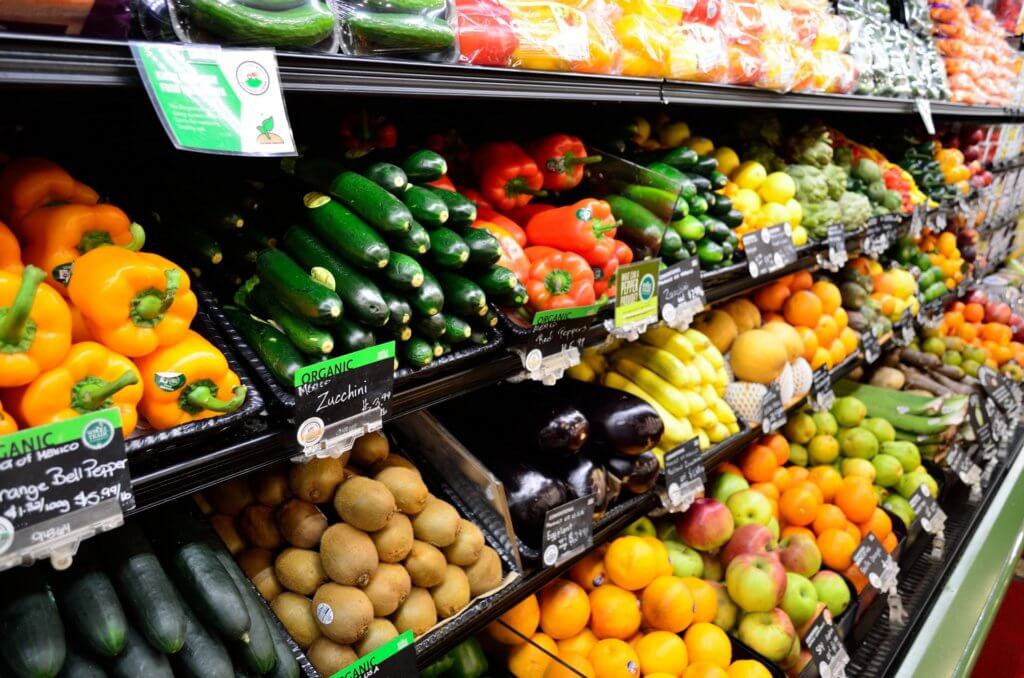Super-Morph: Botanist In The Produce Aisle
by Peter Lesica & Annie Garde
Broadcast 11.2 & 11.3.2014 and 12.10 and 12.13.2019

PD
Listen:
As the temperature drops and the leaves turn brown and drop as well, it gets hard for a botanist in Montana to find anything interesting to study outside. At this time of year I go on field trips to the supermarket. In the produce section the leaves are still green, and you can always find some germinating alfalfa and mung beans. There’s a lot to be learned among the aisles, but there’s a distressing amount of misinformation as well.
Consider this: In most stores the produce area is divided into two sections: fruits and vegetables. Right here they’re leading you astray. The glossary of my botany text defines fruit as a ripened ovary containing the seeds. A vegetable is the vegetative part of the plant, not involved in reproduction. These definitions are simple and straightforward, but most supermarkets have it all screwed up. They tell you that peas, tomatoes, squash, eggplant, cucumbers, peppers and corn are vegetables. But … are they? Think about it. Peppers, tomatoes, squash and cucumbers have seeds in them, so they’re actually fruits. Beans and peas and corn are seeds, so they’re all really fruits, too. Now asparagus, onions, carrots, lettuce, spinach, potatoes and cabbage are the leaves, stems or bulbs and roots of plants, so they truly are vegetables. And over there in the fruit section, just about everything belongs except rhubarb which is obviously a stem and therefore a vegetable.
Hey – it’s not that I blame the produce people. It’s often a tough call. Think about the borderline cases. When you eat broccoli or cauliflower, you’re eating the stem and immature flowers of a cabbage. The stem is vegetative, but the flowers are reproductive structures that would become fruits given enough time. Next time you go shopping, bring your forceps and dissecting needles along and inspect the broccoli. See what I mean? But don’t get caught. It’s not clear, then, whether these should be labeled fruits or vegetables but we can give the produce people the benefit of the doubt on this one, I guess.
Mushrooms are the most glaring error. They’re not even in the Plant kingdom. They’re fungi. They should have their own section in the produce aisle.
So the next time you’re in the field at your local market, talk to the produce person and straighten her out on her plant morphology. She’s sure to appreciate the help.
Every week since 1991, Field Notes has inquired about Montana’s natural history. Field Notes are written by naturalists, students, and listeners about the puzzle-tree bark, eagle talons, woolly aphids, and giant puffballs of Western, Central and Southwestern Montana and aired weekly on Montana Public Radio.
Click here to read and listen to more Field Notes. Field Notes is available as a podcast! Subscribe on iTunes, Google Play, or wherever you listen to podcasts.
Interested in writing a Field Note? Contact Allison De Jong, Field Notes editor, at adejong [at] montananaturalist [dot] org or 406.327.0405.
Want to learn more about our programs as well as fun natural history facts and seasonal phenology? Sign up for our e-newsletter! You can also become a member and get discounts on our programs as well as free reciprocal admission to 300+ science centers in North America!












